Syn.: Echinocereus triglochidiatus var. arizonicus (Rose ex Orcutt) L. D. Benson
Family: Cactaceae Juss.
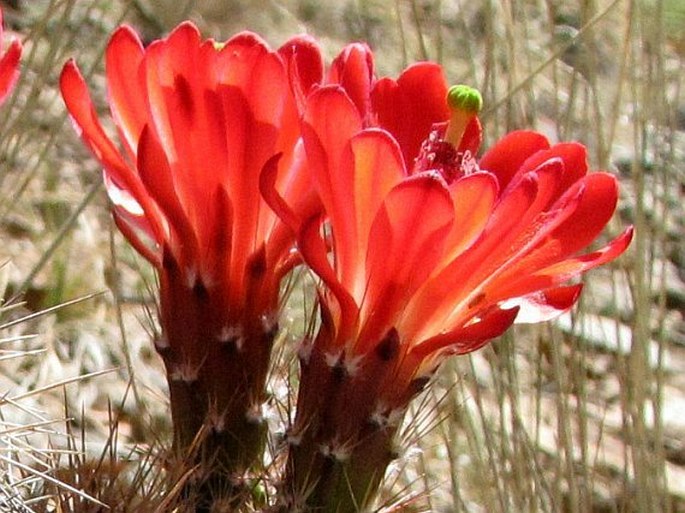
Distribution: Species of Chihuahua desert found in Arizona, New Mexico and Mexican state of Chihuahua.
Ecology: Grows in desert areas, in chaparral, shrubbery, in dry grasslands, on steep walls of canyons, at elevations from 1400 to 1900 m. Blooms from April to May. Pollination is effected by birds.
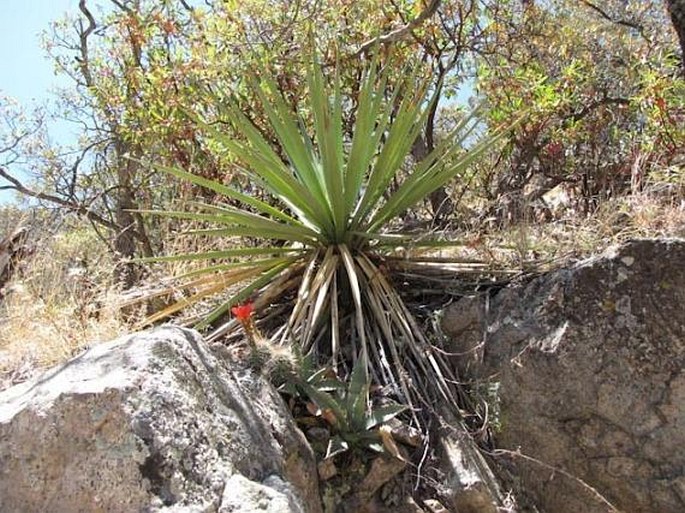
Description: Columnar cactus, branched, never dioecious, diploid. Stem is erect, 10–40 × 5–10 cm, cylindrical, 8–13 ribs, slightly wavy, areoles 10–15 mm distant, with 8–18 spines, straight or twisted, side spines yellowish to brownish, 5–25 mm long, central spines 1–4(–8), brownish-yellow to reddish-black, 15–50 mm long, in crosscut square to oval. Flowers 55–70 × 35–50 mm, tube 25–35 mm long, petals are orange to deep red, carmine, 25–40 × (5–)10–15 mm, anthers pink to purple. Fruit is green, 20–30 mm long.
Possible confusion: This diploid species resembles polyploid taxa of Echinocereus coccineus, especially to dioecious, tetraploid E. coccineus var. rosei. E. arizonicus is never dioecious, it is less branched than E. coccineus. The difference is also evident in colour of petals and the shape of the longest spine.
Treat and protection: It is protected internationally by CITES agreement and in US, federally and by the state of Arizona.
Note: In souhteast Arizona you can find subspecies E. arizonicus subsp. nigrihorridispinus. The nominate subspecies is found mainly in central Arizona. However, this taxonomical puzzle hasn’t been solved so far.
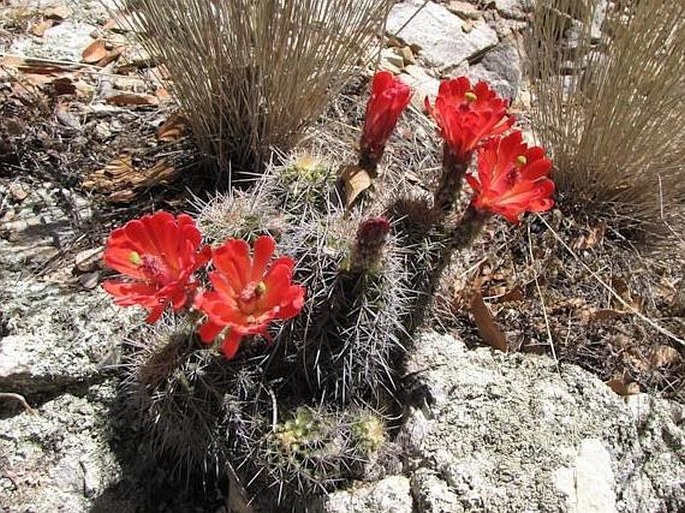
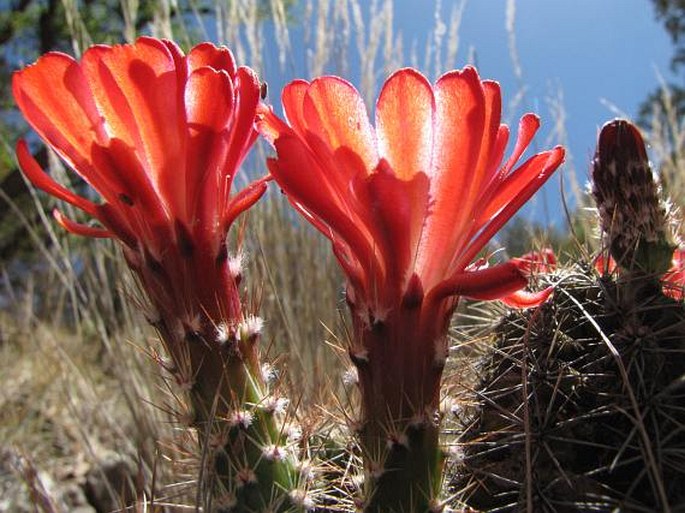
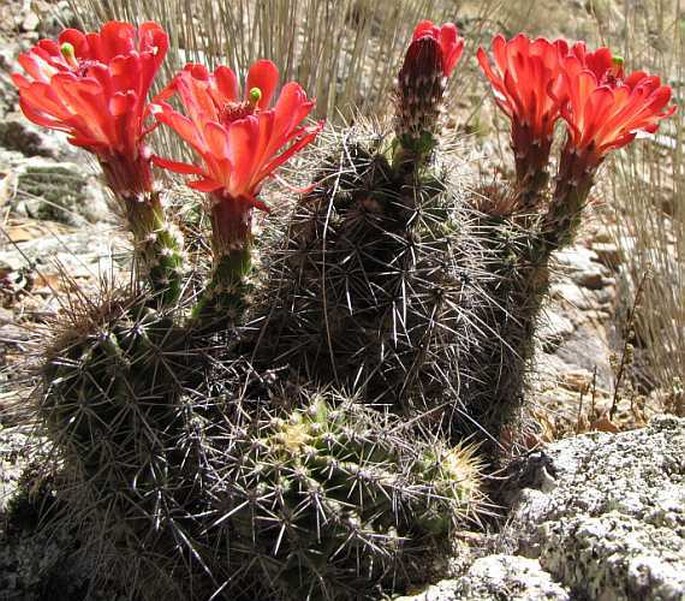
These images were taken in USA, Arizona, Santa Rita Mountains, Madera Canyon (May 2009).


